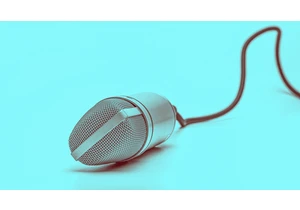If you’ve followed Apple for any length of time, you’ve no doubt come across the notion that the company doesn’t rush into adopting cutting-edge technology; instead, it waits until it can do it right.
“We don’t feel an impatience to be first,” CEO Tim Cook told Bloomberg in 2017. “Our thing is to be the best and to give the user something that really makes a difference in their lives.”
But I’m starting to wonder if something else is going on. Sure, a lot of Apple’s Android competitors have sometimes been accused of throwing features at the wall. These days, though, I think their hardware is often just markedly better—and it hits the market earlier.
There have certainly been times when Apple has waited and knocked it out of the park with its own implementation of a new component or product category. Touch ID was far faster and more reliable than any previous fingerprint reader. Apple Pay was a comprehensive use case for Near Field Communication that worked seamlessly compared with prior solutions. The Apple Watch might not have been perfect at launch, but it was (and is) light years ahead of other smartwatches.
Other examples fall into a gray area. Take wireless charging. “Having to create another device you have to plug into the wall is actually, for most situations, more complicated,” Apple senior VP Phil Schiller said in 2012. Five years later, the iPhone X and 8 launched with Qi charging that worked the exact same way, without any particular special sauce. Today, Apple has by far the most convenient setup with its MagSafe ecosystem, and it has set the bar for the new Qi2 standard. But that doesn’t change the fact that it was years behind on the basic functionality.
More recently, there have been cases in which Apple is simply late. AI is an obvious example, but camera hardware is more pertinent.
For many years, Apple could and did lay claim to having the best phone camera around. But it’s impossible to make that case today if you have any experience with the top Android phones on the market. Some of that comes down to software tuning, but hardware plays an equally big role.
In fall 2023, Apple introduced its “tetraprism” camera to the iPhone 15 Pro Max, upping the focal length from 3x to 5x. Apple presented this as a new approach to lens design, and in some ways it is; it doesn’t have the characteristic rectangular shape of “periscope” telephoto lenses on other Android phones, although the principle is the same.
But Apple couldn’t claim any major performance breakthrough, except over itself. Take the Xiaomi 13 Ultra, released at the start of that year; its 5x telephoto lens was paired with a bigger sensor, and the difference in clarity was stark. Apple had been rumored to be lining up suppliers for periscope telephoto cameras since 2020, and even had filed patents on the technology in 2016, but it doesn’t seem to have gained anything by waiting so long to bring the concept to market. Huawei and Oppo, meanwhile, were shipping impressive periscope cameras back in 2019.
It was a similar situation with 48-megapixel image sensors, the main new feature on the iPhone 14 Pro camera in 2022. Again, it’s not clear what took Apple so long to introduce this—the first 48-megapixel sensors made their way to Android phones in early 2019, and they worked the exact same way by combining four pixels into one for better 12-megapixel shots.
In recent years, the state of the art in Android phones has been 1-inch image sensors, the same size you’ll find in enthusiast compact cameras like Sony’s RX100 line. Once you’ve used one, it’s hard to go back; these phones take photos that just don’t look like they came from a phone. The technology is mature, but at least from the outside, Apple does not seem all that interested in keeping up.
It’s possible that Apple’s scale makes it harder for the company to secure cutting-edge components in the quantities it requires for each launch. The first tetraprism lens was only available on the iPhone 15 Pro Max before making it to the smaller iPhone 16 Pro the following year, for example. Android OEMs ship so many more individual models that it’s easier for them to reserve high-end parts for certain flagships.
I’ve been thinking about this dynamic lately when reading reports of Apple’s belated entry into folding phones, a category Samsung kicked off in 2019—albeit with some well-publicized hiccups. Last month Bloomberg’s Mark Gurman reported that Apple plans to use technologies from a slimmer iPhone this year in a folding phone that could land “as early as 2026.”
I’m not sure this checks out. According to Gurman, the 2025 “iPhone Air“ will be around 2 millimeters thinner than current models; the iPhone 16 Pro is 8.3 millimeters thick. The thinnest folding phone out there today is Oppo’s Find N5, which has a near-invisible crease in its display and is just 4.2 millimeters thick when unfolded. At this point, what could Apple really be learning by producing a phone closer in thickness to the iPhone 16 Pro?
The Find N5 isn’t just impressive hardware—it’s a phone that makes you wonder how much thinner it could even be. Make it a fifth of a millimeter thicker, and I’m not sure it would still fit its USB-C port. (Gurman does note that Apple also plans to investigate the possibility of port-free iPhones.)
But more to the point, the Find N5 is already on the market. At this point, I would not expect Apple’s first attempt at a folding phone to break new ground on a technical level. Six years on from the original Galaxy Fold, it seems unlikely that foldable hardware is going to get meaningfully better than what’s out there right now.
Apple’s software is broadly excellent and its ecosystem is unparalleled, which is why I continue to buy iPhones myself. The Mac, iPad, and Apple Watch really are the best products available in their given categories, so I’ll always want a phone that works well with them.
But something is going on with the iPhone. It’s simply no longer the case that Android companies can’t compete on hardware or design. If Apple ever wants to dazzle the world with mobile devices again—or at least hardware obsessives like me—the window may be closing.
Zaloguj się, aby dodać komentarz
Inne posty w tej grupie

Every now and then, you run into a tool that truly wows you.
It’s rare—especially nowadays, when everyone and their cousin is coming out with overhyped AI-centric codswallop tha

Tesla released its quarterly earnings report on Tuesday, its first since the company’s chief executive, Elon Musk, took up residence in the Trump White House and immediately began trying to fire f

There’s never a dull day in the world of weight-loss medication. This week brought new restrictions on compounded GLP-1 medication, the cheaper, copycat versions of brand-name drugs that tel

In December 2023, I wrote an article exploring Apple CEO Tim Cook’s most likely successors, because t

“Meta profits, kids pay the price,” was the message delivered by dozens of grieving families at the doors of Meta’s Manhattan office on Thursday.
Forty-five families traveled from

The world’s auto industry is getting a shake-up from Chinese automakers that

There’s Blue Sky and then there’s Bluesky.
Blue Sky, a paper goods company
